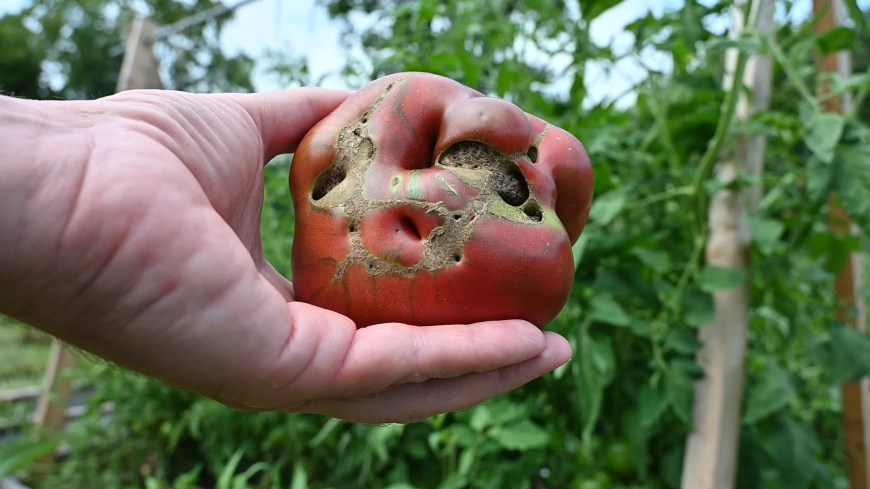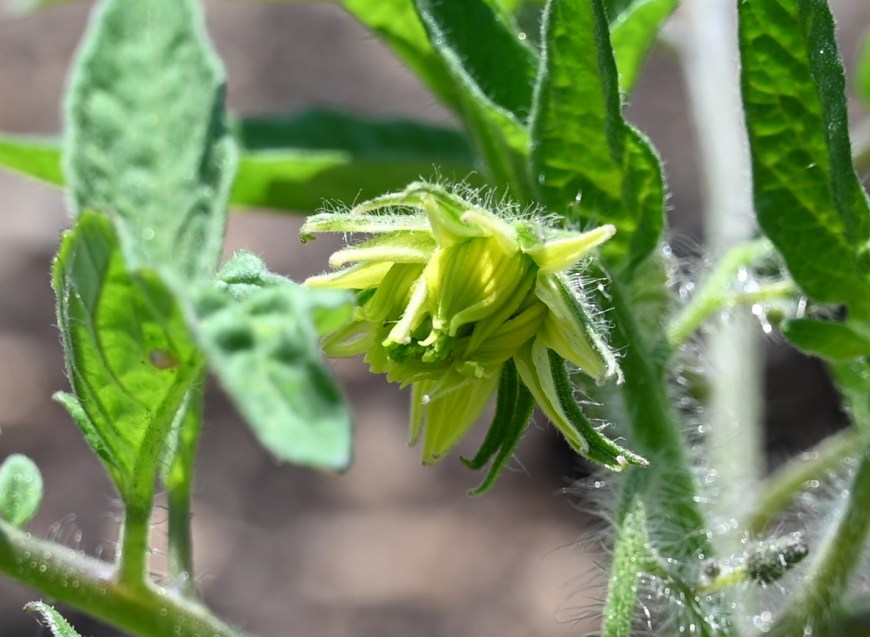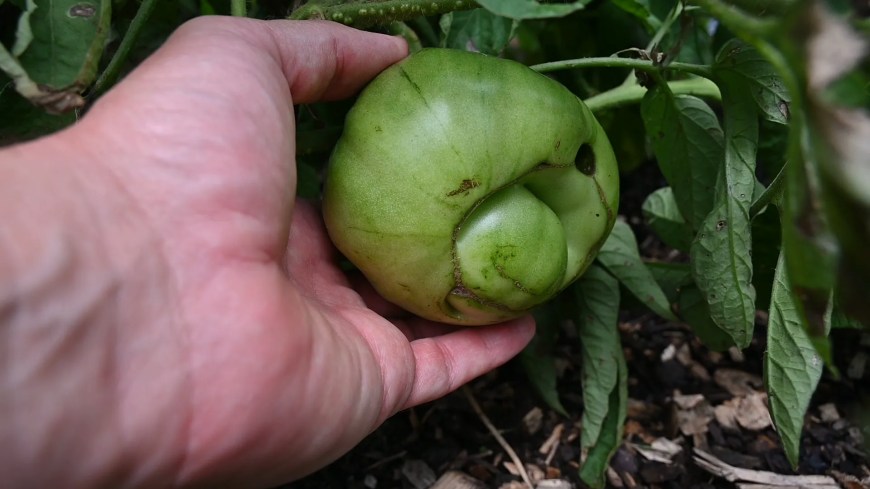Before I delve into the catfacing issue let’s clear up a big misconception: catfaced tomatoes do not actually look like catfaces! Now that we’ve covered that important fact that let’s talk about what catfacing is and what causes your tomatoes to look like deformed monstrosities. Catfacing is a general term gardeners use to describe deformations of the tomato fruit. It usually occurs on the blossom side of the tomato but it is an entirely different problem than blossom end rot. The two issues are not directly related.
I may earn a small commission if you purchase through some of the links in this post at no extra cost to you. I only recommend products I use and trust!
What Does a Catfaced Tomato Look Like?
Catfaced tomatoes can appear slightly deformed to significantly formed. They make for some very ugly tomatoes but are perfectly fine to be used in the kitchen. In fact they can taste amazing! They just don’t look all that amazing.

What Causes Deformed Tomatoes?
The cause of catfacing is something that usually happens during flower development. The flowers form differently because of a number of potential flowers and the catfacing emerges as the fruit develops. Recently I had a very strange looking bloom appear on a Cherokee purple tomato. The flower looked like a double flower which is a condition called fasciation. Fasciation happens in all kinds of flowers, not just tomatoes. When a fasciated flower forms the tomato continues to produce the fruit as best as it can which also becomes deformed. Fasciation is a condition where the growing tip of the plant becomes flattened or split, often producing double or distorted flowers. In tomatoes, this can lead to misshapen fruit like you would see with catfacing.

There are a number of reasons catfacing can actually occur:
- Inconsistant Temperatures:
- Weather is cold (under 50°F/10°C) when the flower is forming.
- Cool weather after a period of heat.
- Big temperature swings between day and night.
- Incomplete pollination
- Too much nitrogen fertilizer than can cause excessive vegetative growth.
- Predisposition to the condition. Many heirloom plants have a tendency to create catfaced tomatoes.
- Physical damage to the flower itself.
- Chemical overspray damage on the flowers.
In the case of my tomatoes I planted my plants a little earlier than usual. Since frosts were not in the forecast I planted right around April 15th. I normally wait until the beginning of May. The night temperatures were still getting cool but the daytime temperatures where nice and warm. Plus we had some cooler weather after planting.
My tomatoes were also heirloom plants like Cherokee purple that do have a predisposition to forming deformed tomatoes.

What Can You Do About Catfacing?
There aren’t many great options to prevent catfacing from happening but I do have a few suggestions that could help. Plant a little later in the season to avoid the temperature fluctuations. It’s hard to wait sometimes but postponing planting until a couple weeks after the frost date may help with the temperatures.
Avoid using chemicals near your plants. This is a good strategy in any case, but if you use chemicals in your yard keep them far away from the vegetable garden.
Pick tomato varieties that are more stable, this may mean planting hybrids or even heirloom tomatoes grafted onto hybrid root stock.
Use balanced fertilizers like Espoma or Jobe’s Organic Tomato Fertilizer that have low NPK ratios.
If you see malformed flowers you can go ahead and remove them to prevent the deformed tomatoes from forming. The plant can redirect energy from those flowers and put it into making new ones.
Of course you can always simply accept your deformed tomatoes. Who knows, maybe there is a prize out there for the world’s ugliest tomato? In any case the tomatoes, while ugly, will still taste great and are very usable in the kitchen.
How to Start a Fall Garden From Seeds in Raised Beds
Starting a fall garden is a great thing to do. Especially so when there is so much uncertainty in the world. A fall garden provides food security and is a great way to relieve stress! Fall gardens are not hard to get started but there…
My Raised Bed Vegetable Garden Changes for 2010
Each year I try to expand the vegetable garden a little bit more. The first year in our home I didn’t have time to put together a garden before the growing season started and we missed out on any vegetable garden. The “L” Shaped Raised…
Plan for Sunlight in the Garden
When creating any kind of garden plan one of the most important considerations is the amount of light the garden receives. Vegetable gardens and ornamental gardens are both affected significantly by the amount of light in the garden. Light changes two major aspects to your…
Sweet Potatoes Eaten by Voles!
Wouldn’t you know it. I had big plans for those delicious garden grown sweet potatoes. Last year they were the best things ever. Candy from the ground and I had little reason to think I wouldn’t have more of the same delicious tubers again this…
Checking out My Vegetable Garden
Since we were gone for a few days one of the first things I did was check the vegetable garden’s progress. Things are shaping up even if it is a bit unkempt. The tomatoes need tied off again. I’m using bamboo stakes and twine to…
A Garden Update: Peppers, Tomatoes, and Tomatillos
The vegetable garden is finally taking off! Even though it feels like things have been moving slowly, we’re already seeing exciting progress — tomato plants are starting to flower, and our pepper plants are showing off their first baby peppers. This year, I planted around…
Discover more from Growing The Home Garden
Subscribe to get the latest posts sent to your email.







